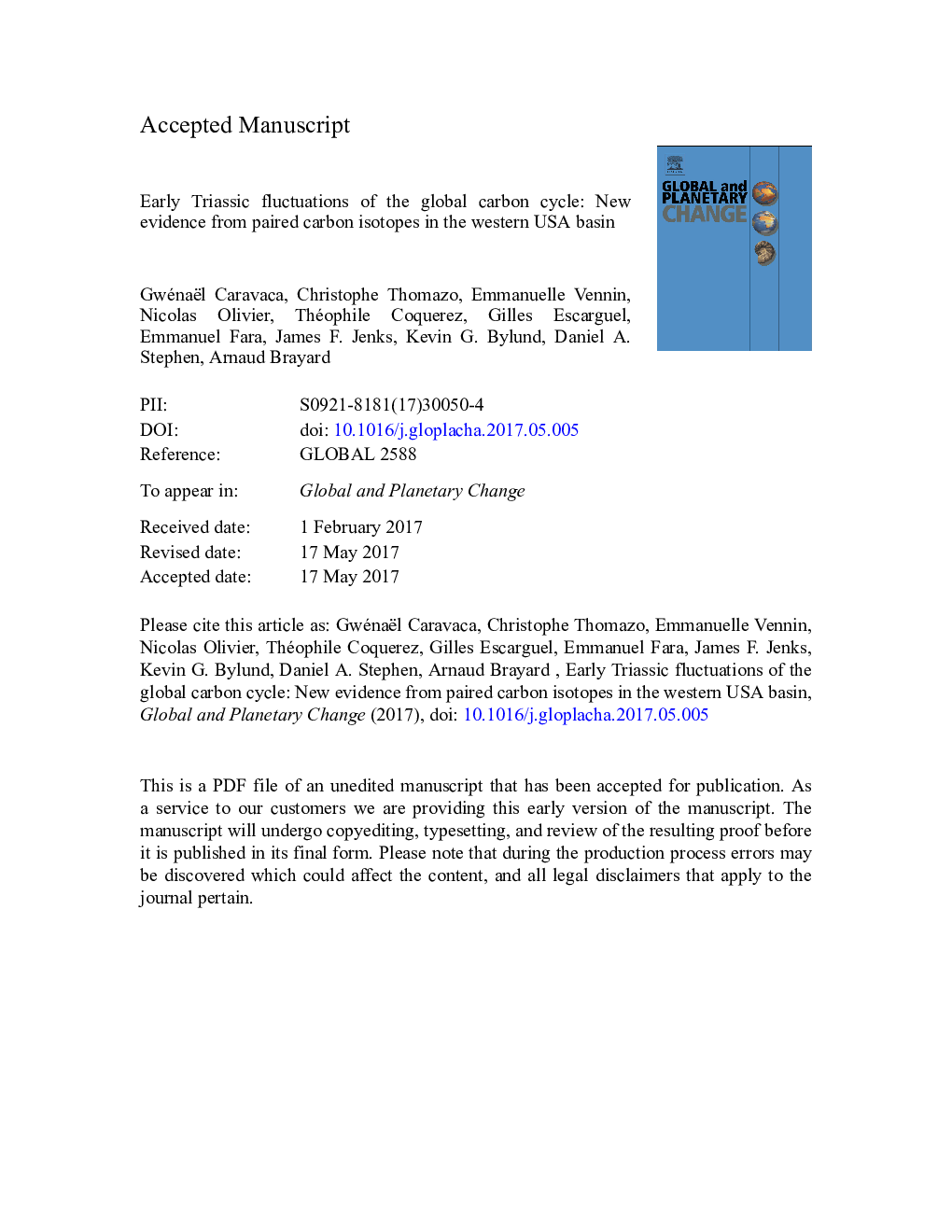| کد مقاله | کد نشریه | سال انتشار | مقاله انگلیسی | نسخه تمام متن |
|---|---|---|---|---|
| 5755240 | 1621628 | 2017 | 48 صفحه PDF | دانلود رایگان |
عنوان انگلیسی مقاله ISI
Early Triassic fluctuations of the global carbon cycle: New evidence from paired carbon isotopes in the western USA basin
ترجمه فارسی عنوان
نوسانات اولیه تریاس در چرخه کربن جهانی: شواهد جدید از ایزوتوپ های کروی در حوضه غرب آمریکا
دانلود مقاله + سفارش ترجمه
دانلود مقاله ISI انگلیسی
رایگان برای ایرانیان
کلمات کلیدی
اوایل تریاس، ایزوتوپ های کروی زاویه ای، اثر ایزوتوپ خالص، حوضه غربی ایالات متحده، اسمیتیان، اسپاتیفن،
موضوعات مرتبط
مهندسی و علوم پایه
علوم زمین و سیارات
فرآیندهای سطح زمین
چکیده انگلیسی
In the aftermath of the catastrophic end-Permian mass extinction, the Early Triassic records recurrent perturbations in the carbon isotope signal, most notably during the Smithian and through the Smithian/Spathian Boundary (SSB; ~ 1.5 myr after the Permian/Triassic boundary), which show some of the largest excursions of the Phanerozoic. The late Smithian also corresponds to major biotic turnovers and environmental changes, such as temperature fluctuations, that deeply impacted the recovery after the end-Permian mass extinction. Here we document the paired carbon isotope signal along with an analysis of the trace and major elements at the long-known Hot Springs section (southeastern Idaho, USA). This section records Early Triassic sediments from the Griesbachian-Dienerian up to the lower Spathian. We show that the organic and carbonate δ13C variations mirror the signals identified at a global scale. Particularly, the middle Smithian-SSB event represented by a negative-positive isotopic couplet is well identified and is not of diagenetic origin. We also document a positive excursion potentially corresponding to the Dienerian/Smithian Boundary. Observed Smithian-Spathian excursions are recorded similarly in both the organic and carbonate reservoirs, but the organic matter signal systematically shows unexpectedly dampened variations compared to its carbonate counterpart. Additionally, we show that variations in the net isotopic effect (i.e., Î13C) probably resulted from a complex set of forcing parameters including either a mixing between terrestrial and marine organic matter depending on the evolution of the depositional setting, or variations in the biological fractionation. We establish that the Î13C signal cannot be directly related to CO2-driven temperature variations at Hot Springs. Even though the carbon isotope signal mirrors the Early Triassic variations known at the global scale, the Hot Springs signal probably also reflects local influences on the carbon isotopes that are neither diagenetic nor representative of the global exogenic carbon cycle.
ناشر
Database: Elsevier - ScienceDirect (ساینس دایرکت)
Journal: Global and Planetary Change - Volume 154, July 2017, Pages 10-22
Journal: Global and Planetary Change - Volume 154, July 2017, Pages 10-22
نویسندگان
Gwénaël Caravaca, Christophe Thomazo, Emmanuelle Vennin, Nicolas Olivier, Théophile Cocquerez, Gilles Escarguel, Emmanuel Fara, James F. Jenks, Kevin G. Bylund, Daniel A. Stephen, Arnaud Brayard,
